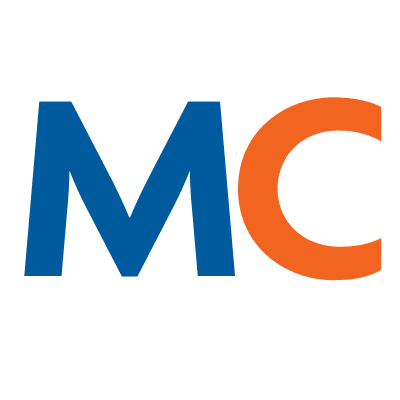- Solutions
- Solutions
- Home Health
- Hospice
- Life Plan Community
- Palliative Care
- Private Duty
- Senior Living
- Skilled Nursing
- Skilled Nursing
- Skilled Nursing Software
- Advanced Insights
- Customer relationship management
- Data and analytics
- Financial & operations management
- Marketing
- Nutrition management
- Referral management
- Regulatory compliance
- Retail management
- Resident engagement
- Revenue cycle management
- Skilled nursing interoperability
- Partners
- Blogs
- Resources
- About
- User Conference

4 Secrets to reaching your patient and caregiver engagement goals
A high priority in healthcare today, patient engagement is considered a key indicator of quality care. It’s become a strategy to reduce cost and drive better outcomes. There’s good evidence that actively engaging patients in their healthcare makes it more likely they’ll practice health behaviors, participate in recovery activities, and follow up with providers to better self-manage their conditions.1
Engagement is also vital to business success, and smart engagement strategies can impact patient satisfaction scores and your bottom line. Patients, families, and caregivers alike want a more engaging and satisfying care experience, and the pandemic has only heightened their expectations around technology-driven access and convenience. In fact, 95% of families say they would choose a provider that gives them easy access to caregivers.2
But home-based providers often work remotely, and that can make communication with key stakeholders inside and outside your organization challenging, especially when it comes to giving patients timely access to health data and secure messaging. Add to that the burden of paperwork and time spent chasing down signatures to move care forward, and it’s easy to see how these challenges can impact your patient and caregiver engagement goals.
An advanced communications platform can improve care coordination across settings and drive more successful patient and caregiver engagement. Platforms like MatrixCare Link come with built-in messaging and forms tools that work in four ways to drive home health engagement:
- Provide easy online access to resources and plans of care
- Connect patients and caregivers in real time
- Manage forms and documents and reduce paperwork
- Improve coordination of care across settings
1. Provide easy access to resources and plans of care
As patients and families seek a more active role in their healthcare, providing opportunities for them to learn about their conditions is critical to outcomes and patient satisfaction. Research shows that homecare patients who receive specifically coordinated care report less pain, better cognitive functionality, and greater participation in activities of daily living.3
The Agency for Healthcare Research and Quality also promotes a Be Prepared to Be Engaged strategy,4 encouraging patients and their families to become more fully engaged in medical appointments and to come prepared to speak up and ask questions.
To support patients in making more informed decisions about their healthcare, MatrixCare Link offers a built-in Education Center. You can easily upload educational materials and tag patients so they can look for information about health topics that are relevant to them. Giving patients easy online access to information brings patients closer to their care teams. Without it, patients are less likely to actively engage in their care plan, which can affect outcomes and delay recovery. And giving families access to the Education Center makes it easier for them to plan and provide support to their loved ones. MatrixCare Link saves you time reloading materials as well. When you revise materials, they are automatically updated in the Education Center, so patients see the most up-to-date information.
2. Connect patients and caregivers in real time
The more efficiently care teams, patients, and provider partners can connect with each other, the more satisfying and effective the care experience will be for all. Technology gives patients flexibility in how and when they communicate with care teams and helps them make more informed decisions about their care and treatment. MatrixCare Link provides a simple and secure way for patients and care teams to communicate in real time to easily share information and plans of care. The messages you exchange can also be uploaded to the patient record, helping to ensure continuity of care and keeping the care team up to date.
Increasing collaboration opportunities between key stakeholders extends your team’s reach and allows them to assess patients more quickly to develop plans of care. Group broadcast messages and alerts help improve team coordination and save time. They can also be essential for staff, making it easier to fill an open shift or share policy updates. And with MatrixCare Link’s masked messages, only the person that sends the message can see the reply, keeping communication efficient and avoiding an influx of “reply all” responses. Read receipts let caregivers know messages have been seen so care can move forward.
Messaging tools make it easy for clinicians to securely communicate with patients, families, and caregivers to confirm a scheduled visit ahead of time, or to notify a liaison to meet with patients in a hospital. This heightened awareness helps patients and families feel more empowered to “own” their health experience, ask questions, and feel prepared for next steps in their healthcare journey. In fact, results of a 2019 AARP survey show that patients who actively communicate and engage with care teams were more satisfied with their experience, demonstrated healthier habits, and better adhered to their prescribed medical treatment.
3. Easily manage forms and documents
“No nurse, no clinician wants to do clerical work. They pursued careers in healthcare to deliver care, not push paper. Yet they’re spending 70 to 80% of their days doing just that,” says Kyle Platt, vice president of business development for Awake Technologies.7 Easing the burden of paperwork by implementing mobile devices, electronic forms, and electronic signatures gives staff more time to spend with patients and helps eliminate the need to track down doctors and approvals to move care forward.
With MatrixCare Link, patients can sign consent forms and home health admissions forms via a secure link in text or email, or via an app or staff tablet before they are discharged from a hospital or skilled nursing facility. This facilitates continuity of care, streamlined workflows, and accelerated billing and payment. MatrixCare Link integrates seamlessly with MatrixCare’s EHR as well. Signed forms and documents are automatically attached to the patient record where they can be viewed just seconds later, giving clinicians more time to review healthcare records prior to engaging with patients.
MatrixCare Link also comes with a built-in forms builder tool where you can create your own custom forms, assessments, surveys, and status updates. This capability helps efforts to reduce re-hospitalizations, keeping caregivers informed of patient status across care settings, and giving you an easy way to monitor patient feedback to drive higher patient satisfaction scores. Clinicians can easily communicate with each other via patient discussion groups, case conferences, and interdisciplinary teams/groups, capturing their conversations and attaching them to the patient record for future reference.
4. Improve coordination of care across settings
As patients are increasingly being discharged to their homes rather than to traditional post-acute care settings, home health care is becoming essential to the successful transition of patients out of the hospital. But a cross-sectional study of Medicare beneficiaries showed that only 54% of patients discharged from a hospital with a home health referral received in-home care within 14 days of discharge.5 This indicates a need for better communication and coordination between care visits and across care settings to enable safer, more effective care. That need has only grown with the pandemic.
Providing patients and caregivers with tools and technology that allow them to easily connect between scheduled visits helps ensure that problems are addressed early. For example, a patient or family member can alert the caregiver about issues like wound deterioration or fever, so they can be treated in a timely way to help prevent unnecessary ER visits and re-hospitalizations.
External partners are as essential to timely coordination of care as internal staff, yet 33% of healthcare patients experience gaps in primary care coordination, citing conflicting information, lack of test results or records, or uninformed providers.6 Platforms like MatrixCare Link make it easy to proactively communicate and help prevent costly delays. For example, you can easily message an infusion company to coordinate medication drop off with the caregiver visit, ensuring the medication will be on hand for the scheduled infusion. Or, in the event of a patient death or discharge, hospice staff in the field can promptly notify the DME or HME so they can pick up the equipment and avoid additional days of billing due to delayed notification.
Patient and caregiver engagement is critical to the success of every home health and hospice organization. See how MatrixCare Link can help you achieve your engagement goals.
1BMS Health Services Research, Factors associated with homecare coordination and quality of care: a research protocol for a national multi-center cross-sectional study, 2021.
2Porter Research, Home Healthcare Consumers, 2021.
3BMS Health Services Research, Factors associated with homecare coordination and quality of care: a research protocol for a national multi-center cross-sectional study, 2021.
4Agency for Healthcare Research and Quality, Guide to Improving Patient Safety in Primary Care Settings by Engaging Patients and Families, 2018.
5JAMA Network, Assessment of Receipt of the First Home Health Care Visit After Hospital Discharge Among Older Adults, September 2020.
6BMS Health Services Research, Factors associated with homecare coordination and quality of care: a research protocol for a national multi-center cross-sectional study, 2021.
7Insights, How to Reduce Paperwork and Improve Workflow in Medical Practices, 2019.
Patient and caregiver engagement is critical to the success of every home health and hospice organization. See how MatrixCare Link can help you achieve your engagement goals.
See what MatrixCare can do for you
Rob Stoltz
Rob Stoltz, Sr Dir, Business Development Home and Hospice. A long time veteran in the home-based healthcare IT industry with deep experience in EMRs, care transitions, patient engagement, predictive analytics and interoperability. Most recently, Rob has been focused on technology partnerships leveraging interoperability to benefit all stakeholders involved with patient care while enhancing provider efficiency through effective workflows.
Related Posts


The Hospice FY 2025 Final Rule is released: What are next steps to be taken by hospices?
READ MORE >>
See MatrixCare in action
Start by having a call with one of our experts to see our platform in action.
MatrixCare offers industry-leading software solutions. Thousands of facility-based and home-based care organizations trust us to help them improve efficiency and provide exceptional care.
© 2025 MatrixCare is a registered trademark of MatrixCare. All rights reserved.





